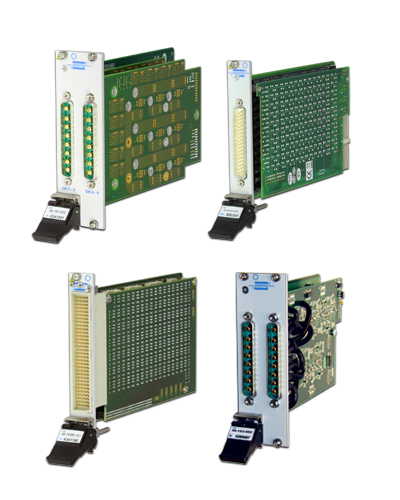Pickering's Modular PXI Products Chosen for Automotive ECU Fault Insertion
The Customer
A leading French systems integrator, who develops functional and design validation testers for the automotive & aerospace industries.
The Application
The end user required test systems to validate the design reliability of their ECUs (Engine Control Units), also known as
PCMs (Power-train Control Modules) or ECMs (Engine Control Modules).
The systems integrator was tasked to find a more flexible and cost-effective alternative to proprietary HILS (Hardware In
the Loop Solutions), which are primarily used for NPI (New Product Introduction). The existing system was an internally
developed design and used a very manual method of performing Fault Simulation. Basically, to insert a fault, the
operator had to manually move cables on a patch panel to short pins together, force a stuck at Battery Voltage or Ground,
or inject false sensor data. This method was slow, subject to human error and was expensive. Given the issue of liability
when electronic systems fail and the continuous pressure to lower costs, a strategy change was clearly necessary.
Fault simulation during the design and validation of ECUs is a method of establishing solid predictions for reliability and
firmware verification, ultimately ensuring the safety of driver and passengers. An ECU relies on information from a set
of sensors and controls and firmware instructions in order to decide what to do with the device it is managing. These
sensors are themselves often working in extremely hostile environments (such as within a car in this application) and
predictably failures can occur in the sensors or their interconnections. The ECU has to respond appropriately to these
component failures, as well as to genuine system faults. The idea of testing for system failures is not new – it is an
important aspect of ECU validation and involves the introduction of electrical faults into a system. The test process
typically duplicates various conditions which could occur because of corrosion, short/open circuits and other electrical
failures inherited through infant mortality, age, damage or even faulty installation. The concept is to ensure
that the ECU will do it’s best to function even with bad data in order to either protect the passengers and/or allow
them to get to a repair facility safely.
The Solution
PXI provides an open platform for HILS requirements. Combining this with the large range of hardware available from Pickering Interfaces and many other vendors, enables the most flexible and cost-effective alternatives to proprietary systems. The modularity and openness of PXI enabled the integrator to design a highly scalable solution with plenty of potential for evolution.

There is a wide range of fault insertion switching modules in PXI, specifically designed to assist the simulation of fault conditions in automotive and avionics applications that involve the reliability testing of safety critical controllers. If you look at the block diagram, you can see how Fault Insertion modules work in this test strategy. These switching modules are designed to route various fault conditions between a test fixture and the UUT which include; open circuit, short circuit between UUT connections and short circuits to other signals such as power, ignition and ground. Faulty serial busses can be injected into the circuit as well.
It should be noted that there are other Fault Simulation systems that are available commercially. However, they tend to be proprietary to one vendor and do not work as well with other vendor’s products, and can be very expensive as well.

Another key point in the selection of the PXI standard was the fact that every vendor involved needed to offer software driver support for RTOS (Real-Time Operating Systems), a key requirement in HILS. The reason for RTOS is the deterministic nature of the test – responses by the UUT, especially in the areas of Active Safety need to be presented at exact times in order to protect the vehicle’s passengers.
The solution was accommodated in four 3U PXI chassis’. Modular products from Pickering Interfaces included 24 modules to
route fault insertion signals (one module with 30 Amp switching (model 40-191),
22 modules at 20 Amps (model 40-194), and 1 module at
2 Amps (model 40-190B)) plus programmable resistor cards (our
model 40-295) for sensor simulation. As PXI is an
open platform, cards from other vendors were also included for FPGA functionality and CAN/LIN communication protocol
support. In addition to the cost/flexibility advantages already mentioned, the application of PXI solutions here also
improved test system performance and cabling elegance in comparison to the original proprietary system.
